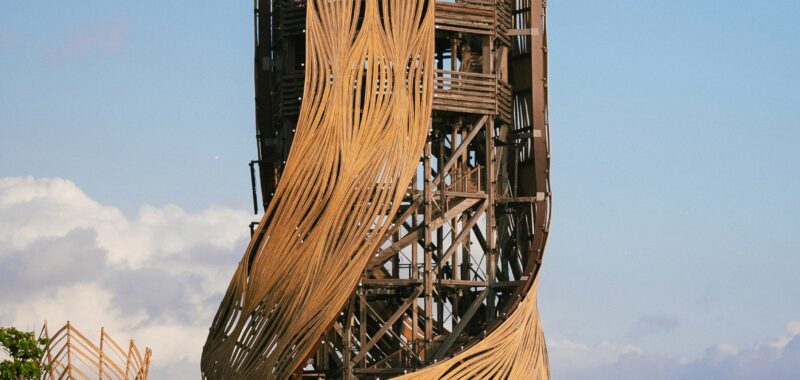French architect Arthur Mamou-Mani has completed the 30-metre-high, rattan and ironwood Tri Hita Karana Tower on a beach in Bali, Indonesia.
Located on top of the black sand beach of Nyanyi within the resort of Nuanu City, the 30-metre-tall THK Tower officially opens to the public tomorrow.
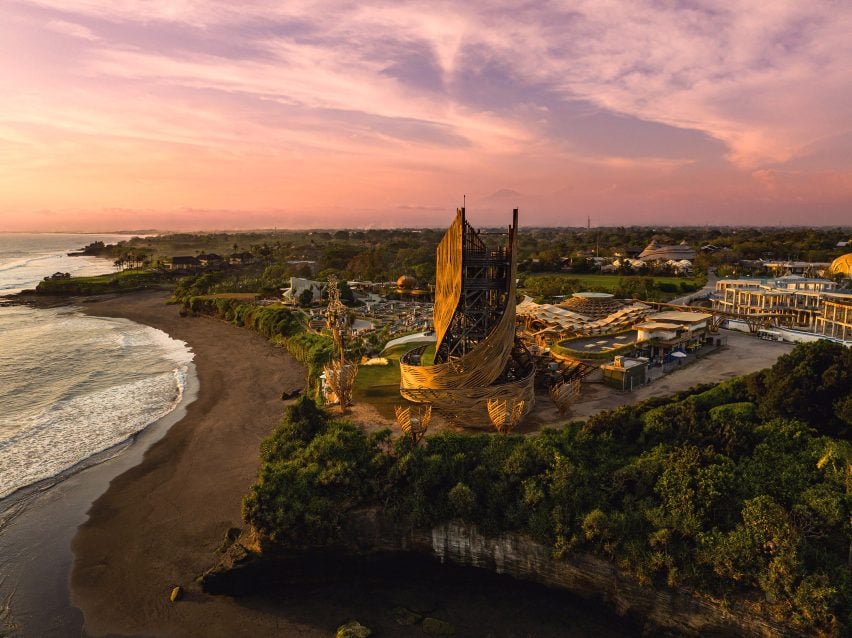
According to Mamou-Mani, the tower was informed by the natural landscape of the region and was designed as the canvas for an interactive, artificial intelligence (AI) art installation.
Flexible rattan and durable ulin, known as ironwood in English, were chosen to realise the intricate and flowing form of the tower so it can withstand the harsh climate in its oceanside location.
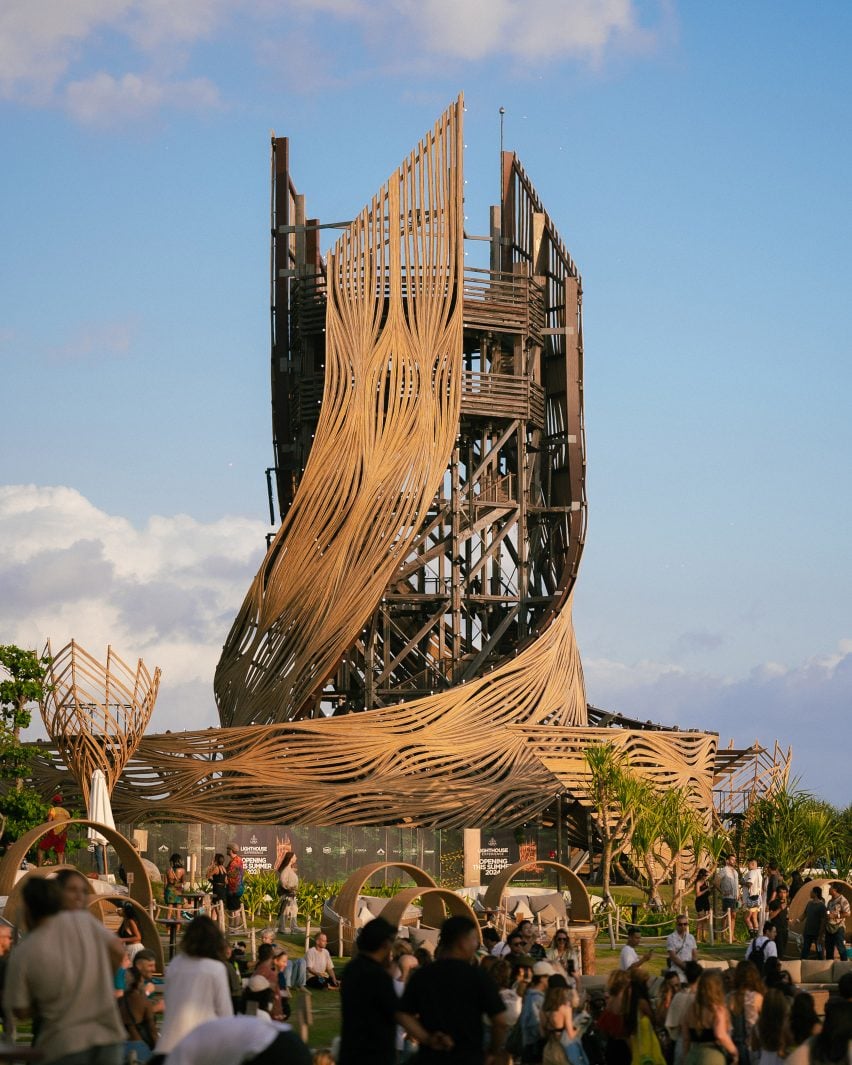
“A key part of the process was understanding the lifecycle of every strip of rattan and ulin that we reclaimed as circularity was key to this project,” said Mani-Mamou.
“Although it is a permanent landmark here in Nuanu City, it has been designed so that it can be disassembled, moved, evolved and broken down over time in a way that does not harm the environment, but instead heroes and elongates it.”
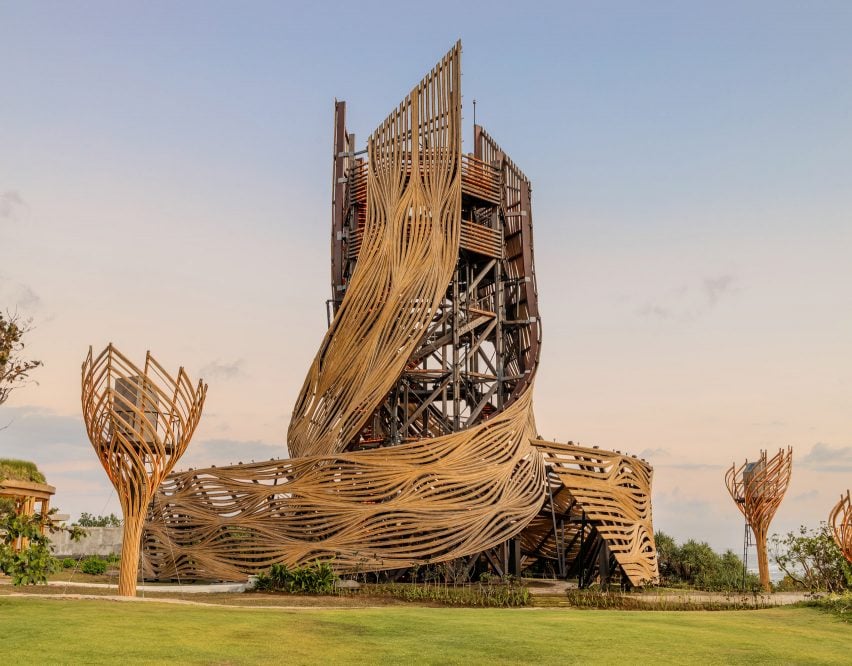
The rattan will also change colour over time making the structure “a living, breathing piece of art”.
“The whole idea is that it is not a static installation, but a living, breathing piece of art, where every line, hole and curve represents a piece of Bali’s forests and history,” said Mani-Mamou.
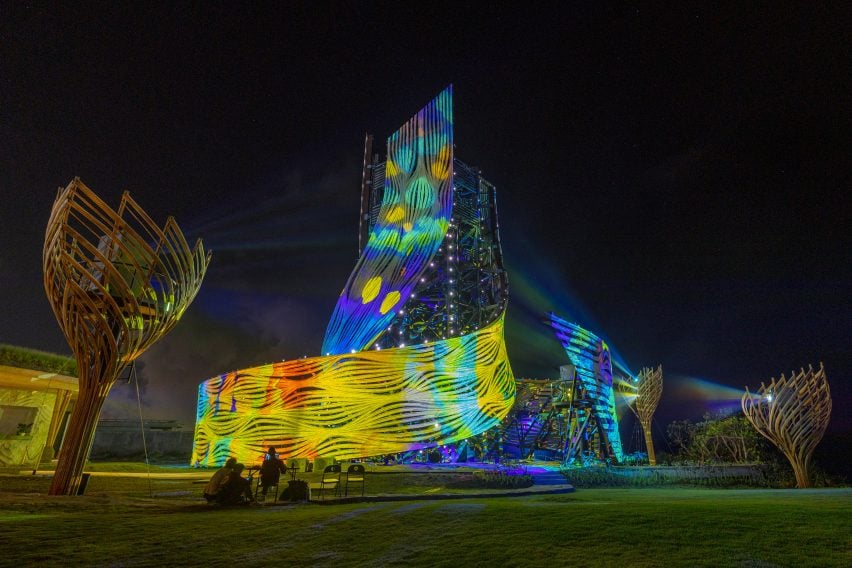
At night, the tower will be lit up with a light and projection show that is created using AI.
Developed by Bali and Dubai-based multimedia production company Delivered, the light show aims to respond to the sustainable message of the tower.
The Delivered team developed the framework of the light show and selected AI artists Pablo Alpe, Ben Helm, Maksim Ha and Aizek to design the digital artwork.
The final art works will be created using over 1,000 light fixtures throughout the tower and 18 projectors housed in 12 surrounding mini towers, along with an in-built custom sound system.
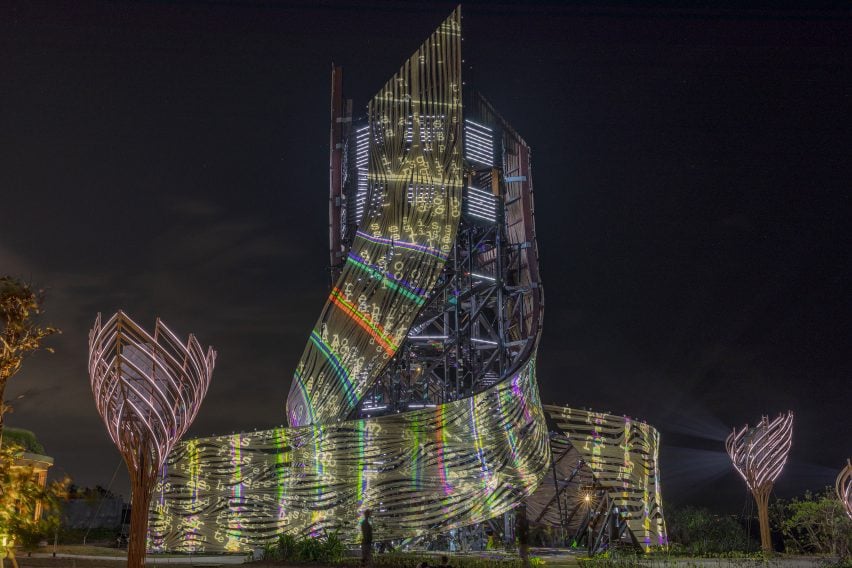
Viewers can interact with the installation using a website with responses integrated into the light show, which will never repeat itself.
“The algorithm at the heart of the display is a living entity, constantly evolving, so no two nightly shows are ever the same,” Delivered founders Nastia Human and Alex Mubert told Dezeen.
“The code reimagines the patterns, ensuring longevity and relevance taking it back to its roots in circularity and sustainability,” they added.
Mamou-Mani is the founder of London-based studio Mamou-Mani Architects, who created the “Galaxia” temple for the Burning Man festival and the Aurora installation for Design Museum’s Waste Age exhibition.
The photography is courtesy of Nuanu City.

